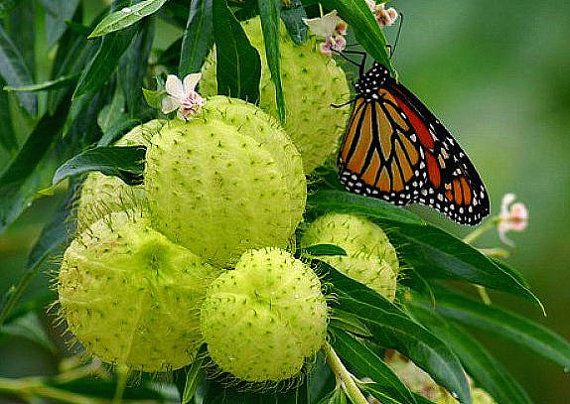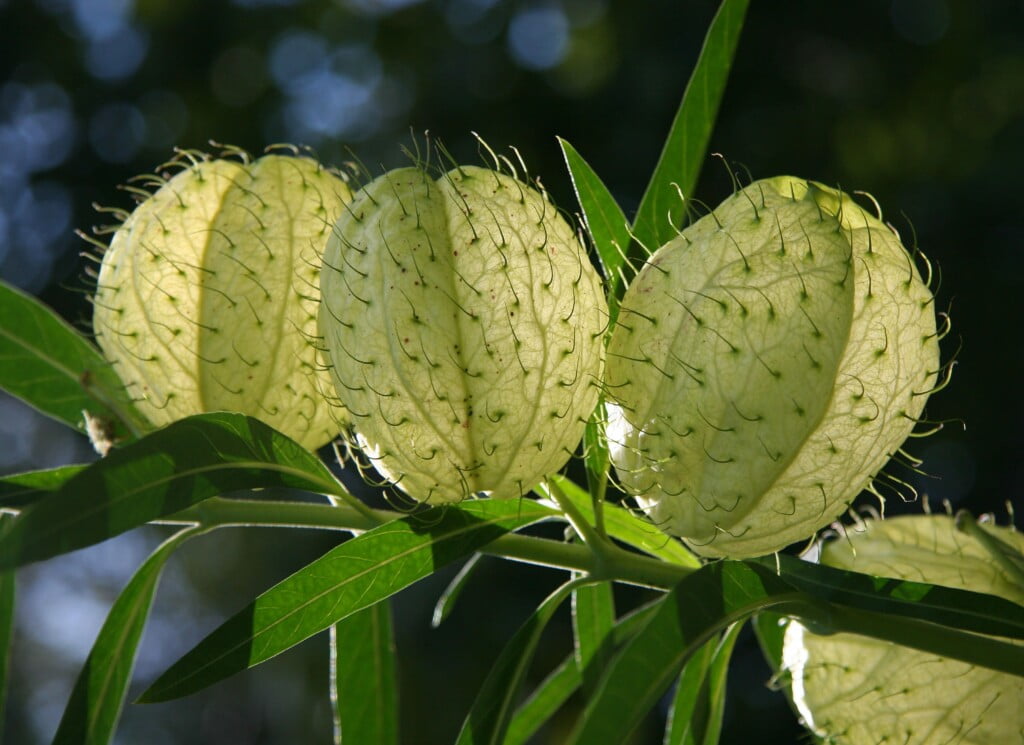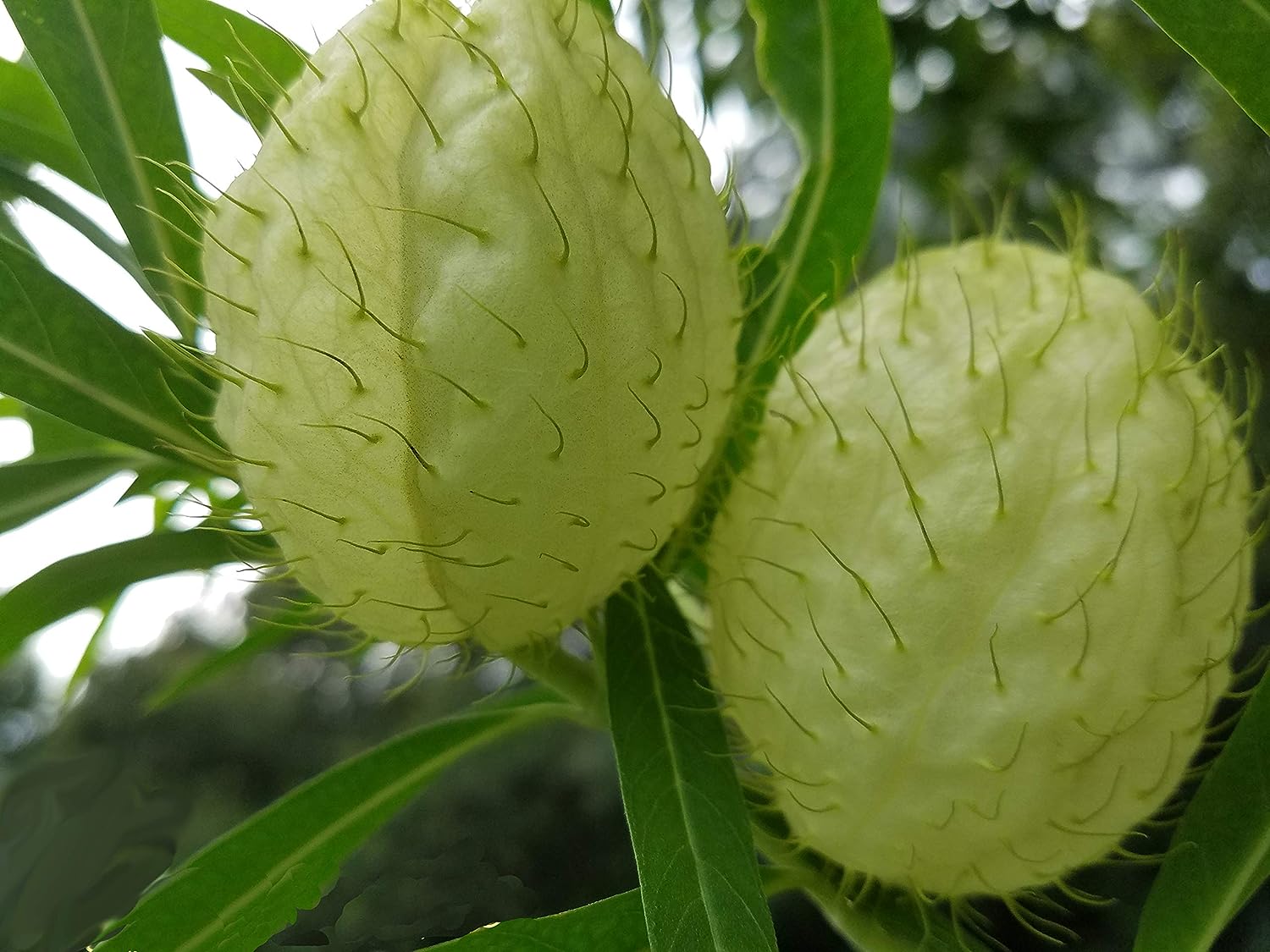G’day, plant lovers and butterfly buffs! Hold onto your Akubras, because today we’re diving into the wild world of Hairy Balls. Yep, you heard that right. No, we’re not talking about a marsupial’s grooming habits or an awkward incident at the beach. We’re talking about Hairy Ball Milkweed (Asclepias physocarpa), an eye-catching plant that’s not just amusing in name but is also a Monarch Butterfly magnet.

A Hairy Introduction
So, what are these Hairy Balls? Originating from southeast Africa, this plant is a species of milkweed that has globular, spiky seed pods that resemble, well, hairy balls. The plant has been introduced and naturalized in various parts of the world, including the good ol’ Land Down Under. It is also known by the following nickies:
- Balloon Plant
- Balloon Cottonbush
- Family Jewels Tree
- Swan Plant
- Oscar Milkweed
Not Just for Giggles
Sure, the name might give you a chuckle, but these plants are serious business when it comes to helping butterflies. In places like the southern United States and northern Mexico, this milkweed species is a vital host plant for Monarch, called “Wanderer” down under, and Queen butterflies. These butterflies lay their eggs on the leaves, and when the caterpillars hatch, they have an all-you-can-eat hairy buffet. The plant’s toxins provide the caterpillars with a chemical defense against predators, making them less appealing snacks for birds and other critters.

20 Hairy Balls Milkweed Seeds (Gomphocarpus physocarpus)
Thriving as a perennial in Zones 8–11, Hairy Balls Milkweed (Gomphocarpus physocarpus) reach an impressive height of 32–72″. Also recognized as swan plant, swan milkweed, and, of course, balloon plant, this is a must-have addition to your butterfly garden. More than 20 seeds. Southern US & Northern Mexico.
